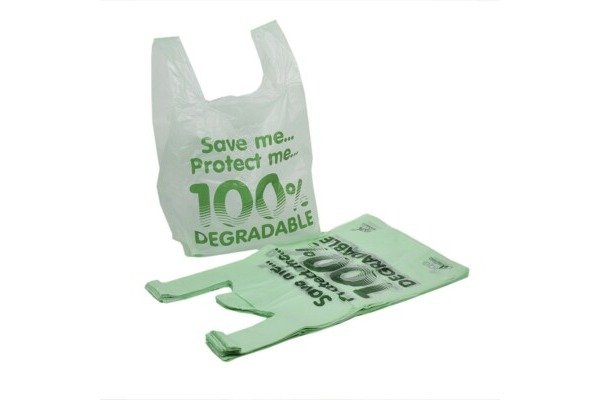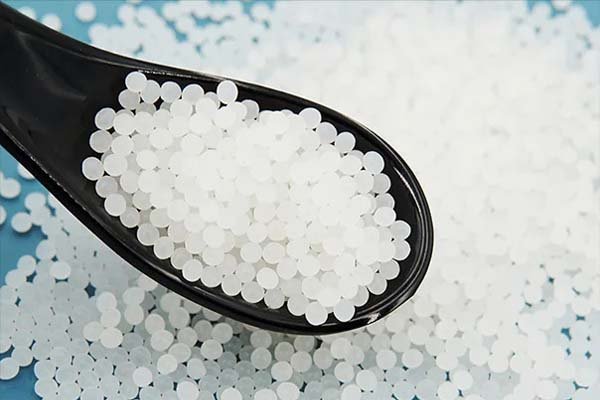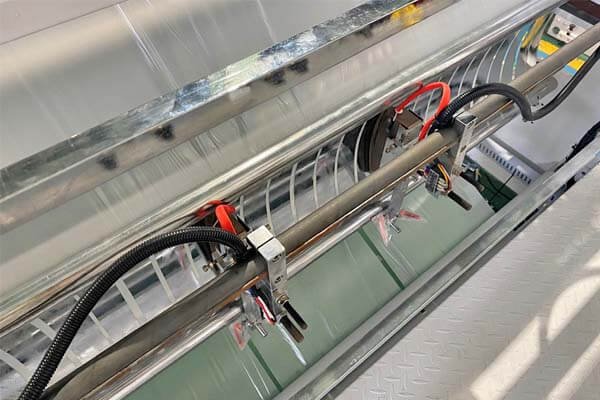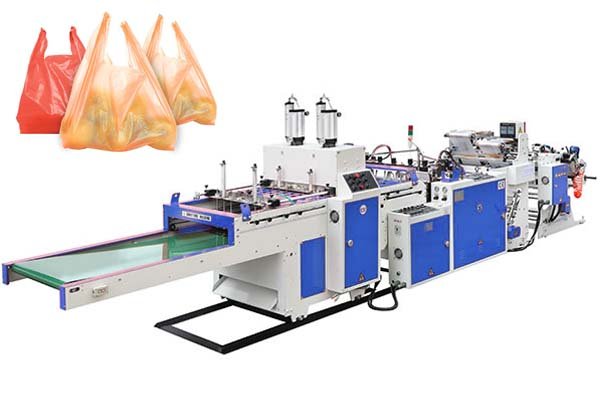
Choosing the wrong plastic for your garbage bags can lead to costly breaks and unhappy customers. This uncertainty is a major problem. We build machines that produce reliable bags every time.
The most common plastic used for garbage bags is Low-Density Polyethylene (LDPE) due to its impressive flexibility and tear resistance. For heavy-duty applications, High-Density Polyethylene (HDPE) is preferred for its superior strength and puncture-proof qualities.
These two materials, LDPE and HDPE, are the workhorses of the garbage bag industry. They are both types of polyethylene, but small differences in their molecular structure give them very different properties. We design our machines at BagMec® to handle both materials flawlessly. Our systems allow you to switch between producing standard kitchen bags from LDPE and rugged contractor bags from HDPE with minimal downtime. We understand that your production needs can change, so we build our equipment to be versatile and efficient for any plastic film.
The key to our machine's performance is precision. For example, our Garbage Bag Machines, with a price range of $23,000 to $35,000, use servo motors that adjust sealing temperature and pressure based on the material. LDPE requires a different heat profile than the stiffer HDPE to create a strong, clean seal. Our patented "Smart Tension Control" system also ensures the film feeds smoothly, preventing weak spots or tears. This level of control means you waste less material and produce a higher quality bag, every single run.
What to use for garbage bags instead of plastic?
Are you exploring eco-friendly options for bag production? Many businesses are making the switch to sustainable materials. Here is what you should know about the alternatives.
Instead of traditional plastics, you can use biodegradable or compostable materials like Polylactic Acid (PLA), which comes from cornstarch, or Polyhydroxyalkanoates (PHA). These bioplastics are designed to break down naturally under specific conditions, reducing long-term environmental impact.

A Guide to Sustainable Bag Materials
When we talk about moving "beyond plastic," it's important to understand the new materials available. This is not just about being green; it's about meeting new market demands and regulations. As a machine manufacturer, we have worked directly with companies pioneering these materials. Our a US eco-brand client, for instance, co-developed a machine with us to produce 100% compostable shopping bags from PLA. This experience gives us a practical understanding of what it takes to work with these innovative films.
Biodegradable vs. Compostable: What's a Key Difference?
These terms are often used together, but they mean different things. It is crucial to understand the distinction for both marketing and technical purposes.
- Biodegradable: This means the material will break down into smaller pieces through the action of microorganisms over time. However, the term doesn't specify the time it will take or the final components. Some biodegradable plastics can still leave behind microplastic fragments.
- Compostable: This is a more specific claim. A compostable material must break down into natural elements like water, carbon dioxide, and biomass within a certain timeframe and under specific conditions (usually in an industrial composting facility). It leaves nothing toxic behind.
For your customers, "compostable" is often the stronger, more verifiable claim. Our machines can be calibrated to handle both types of films, but we always advise clients on the sealing and cutting requirements unique to each.
Comparing the Top Bioplastic Choices
Several types of bioplastics are leading the market. Each has its own source, advantages, and manufacturing challenges. Our machines are designed with the flexibility to handle these different materials.

| Material | Primary Source | Common Use Cases | Key Manufacturing Challenge | BagMec® Solution |
|---|---|---|---|---|
| Polylactic Acid (PLA) | Cornstarch, sugarcane | Food packaging, bin liners, shopping bags | Can be brittle, requires precise temperature control | Our machines have advanced cooling bars and controlled heating elements to create strong seals without making the film fragile. |
| Polyhydroxyalkanoates (PHA) | Microorganisms | Food wraps, medical applications, general bags | Higher cost, can be less heat-resistant | We utilize our "Smart Tension Control" and servo-driven sealing jaws to handle PHA's sensitivity, ensuring minimal material stress. |
| Starch-Based Blends | Corn, potato, tapioca | Bin liners, agricultural films | Can be sensitive to humidity, requires stable feeding | Our systems are built with corrosion-resistant coatings and operate reliably in humid environments, ensuring consistent production. |
Can Paper Be a Good Alternative?
Paper is another option that customers often ask about. It is renewable and curbside recyclable, which are big advantages. However, it has significant drawbacks for garbage bags.
- Lack of Durability: Paper loses almost all of its strength when it gets wet. This makes it unsuitable for kitchen garbage, which often contains wet food scraps.
- Higher Production Footprint: Producing a paper bag requires more energy and water than producing a plastic bag of the same size.
- Weight and Bulk: Paper is heavier and bulkier, which increases transportation costs and emissions.
While paper is great for some uses, like grocery carryout, it is not a practical replacement for plastic in most waste-management scenarios. This is why the industry is focusing more on bioplastics that mimic the functionality of traditional plastic films.
How does plastic thickness affect garbage bag quality?
Have you ever assumed a thicker bag is automatically stronger? That’s a common thought, but the reality is more technical. Let's break down why thickness matters.
A bag's thickness, measured in mils or microns, directly influences its strength, durability, and cost. While a thicker bag is generally stronger, the specific type of plastic, like HDPE versus LDPE, plays an equally crucial role in its overall performance.
The Science Behind Bag Thickness
Understanding thickness is essential for producing the right bag for the right job. You don't want to make a bag that is too thin and breaks easily, but you also don't want to make one that is too thick and wastes money on unnecessary material. This balance is key to profitability. At BagMec®, our machines, from the $8,500 Patch Handle model to the $88,000 Wicketer Bread Bag Machine, are engineered for precise material handling, allowing you to perfect this balance.
Understanding the Measurements: Mils vs. Microns
In the bag industry, you will hear two units of measurement for thickness.
- Mil: This is the standard in the United States. One mil is equal to one-thousandth of an inch (0.001"). It's commonly used for industrial and commercial bags.
- Micron (µm): This is the standard international metric unit. One micron is one-thousandth of a millimeter (0.001 mm). 1 mil is equal to 25.4 microns.
Knowing both is helpful, especially when serving international clients. Our machine interfaces can be programmed in multiple languages and support both metric and imperial units.
A Practical Thickness Guide for Garbage Bags
The ideal thickness depends entirely on the bag's intended use. A bag designed for office paper waste doesn't need the same strength as one for construction debris. Here is a general guide we share with our clients.
| Bag Type | Examples of Use | Common Thickness Range | Recommended Plastic | Why It Works |
|---|---|---|---|---|
| Standard-Duty | Office waste, bathroom trash, light recyclables | 0.5 - 0.9 mil (12 - 23 µm) | LDPE / LLDPE | Provides good flexibility and tear resistance for non-sharp objects at a low cost. |
| Heavy-Duty | Kitchen trash, yard waste, heavier commercial use | 1.0 - 1.7 mil (25 - 43 µm) | LLDPE / LDPE | Offers more stretch and puncture resistance to handle heavier loads and some sharp items. |
| Extra Heavy-Duty | Construction debris, industrial waste, sharp materials | 1.8 - 3.0 mil (45 - 76 µm) | HDPE / LLDPE | HDPE provides superior puncture resistance, making it ideal for nails, wood, and glass. |
| Contractor Grade | Demolition sites, roofing, heavy-duty commercial cleanup | 3.0 - 6.0 mil (76 - 152 µm) | HDPE | The thickest and strongest option, designed to withstand the most demanding jobs without ripping. |
The BagMec® Advantage: More Than Just Thickness
A bag's quality is not just from its thickness. It comes from the quality of the manufacturing process. This is where our machines make a difference.
- Consistent Film Feeding: Our patented "Smart Tension Control" technology maintains a constant tension on the plastic film as it enters the machine. This prevents stretching and ensures the bag has a uniform thickness from top to bottom, eliminating weak spots.
- Perfect Seals: The strength of a bag is often determined by its seal. Our machines use PLC controls to precisely manage the temperature, pressure, and duration of the sealing process. This creates a seal that is as strong as the bag itself.
- Material Waste Reduction: By maintaining precision, you use exactly the amount of material needed. One of our German clients deployed our FFS bag machines and reduced their material waste by 18%, a significant cost saving.
Conclusion
Whether you are using traditional LDPE, heavy-duty HDPE, or innovative bioplastics like PLA, the quality of your garbage bags depends on the precision of your machinery. We provide versatile, future-ready machines that empower you to produce superior bags for any market demand.






